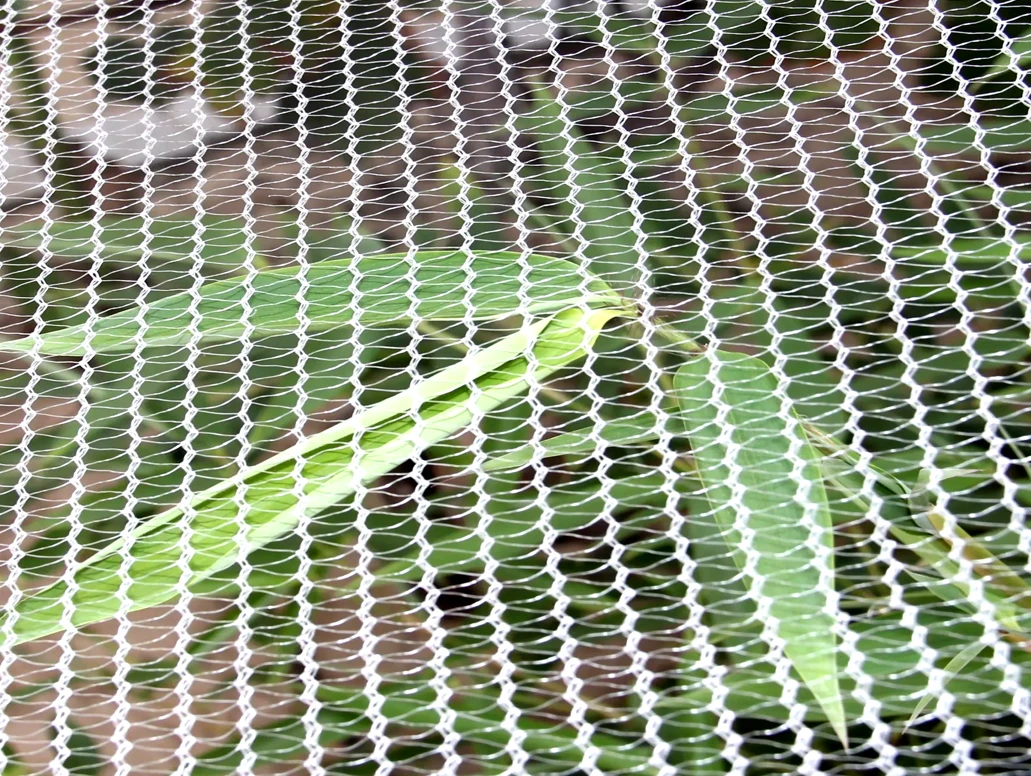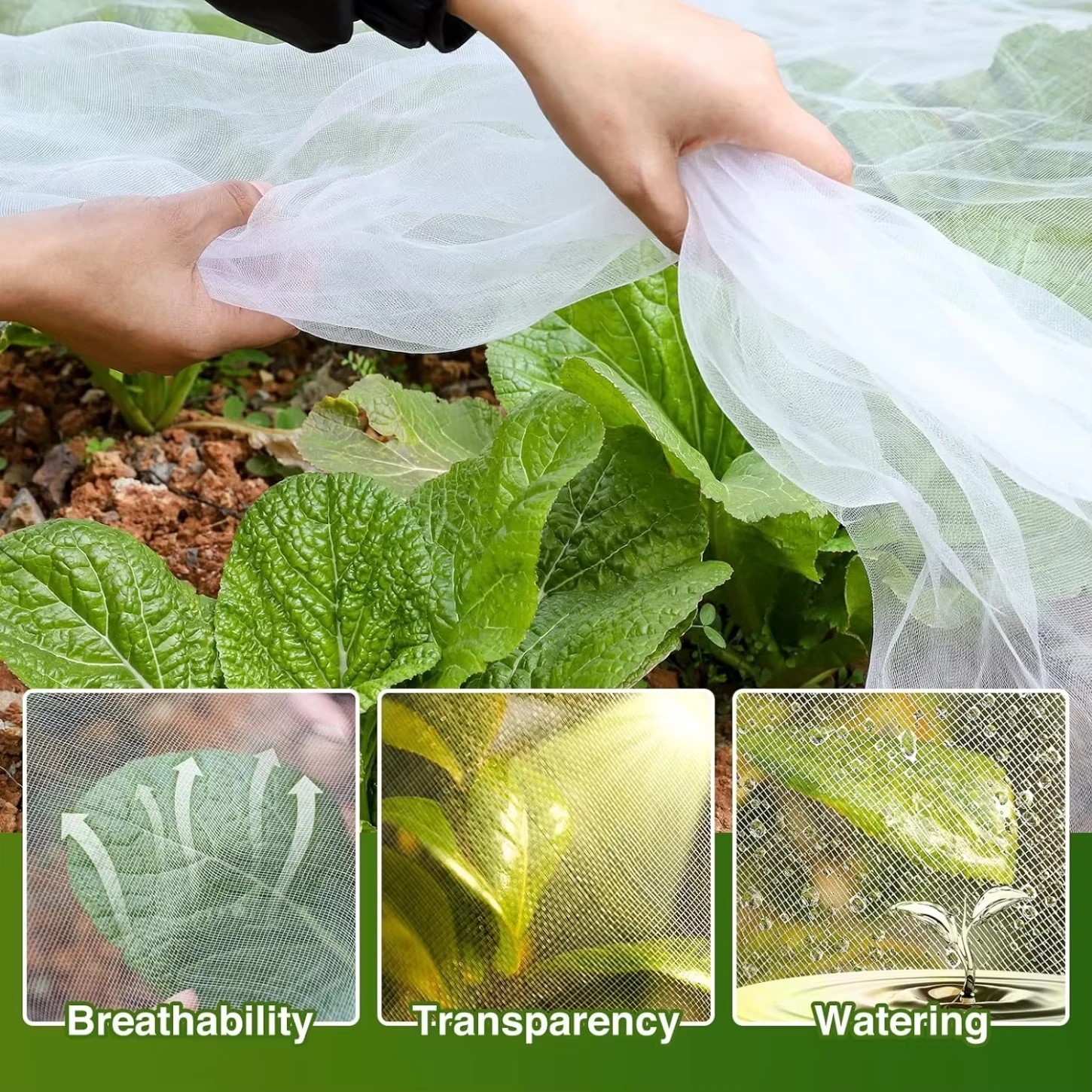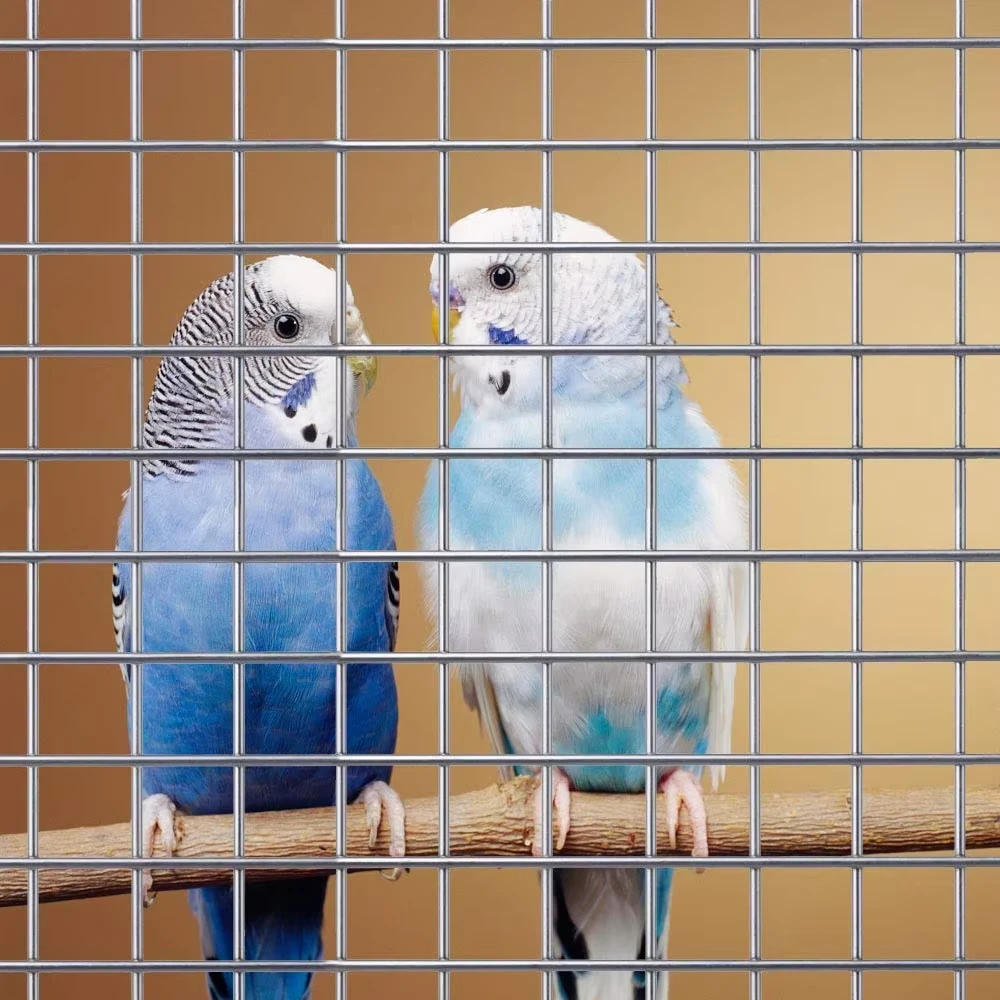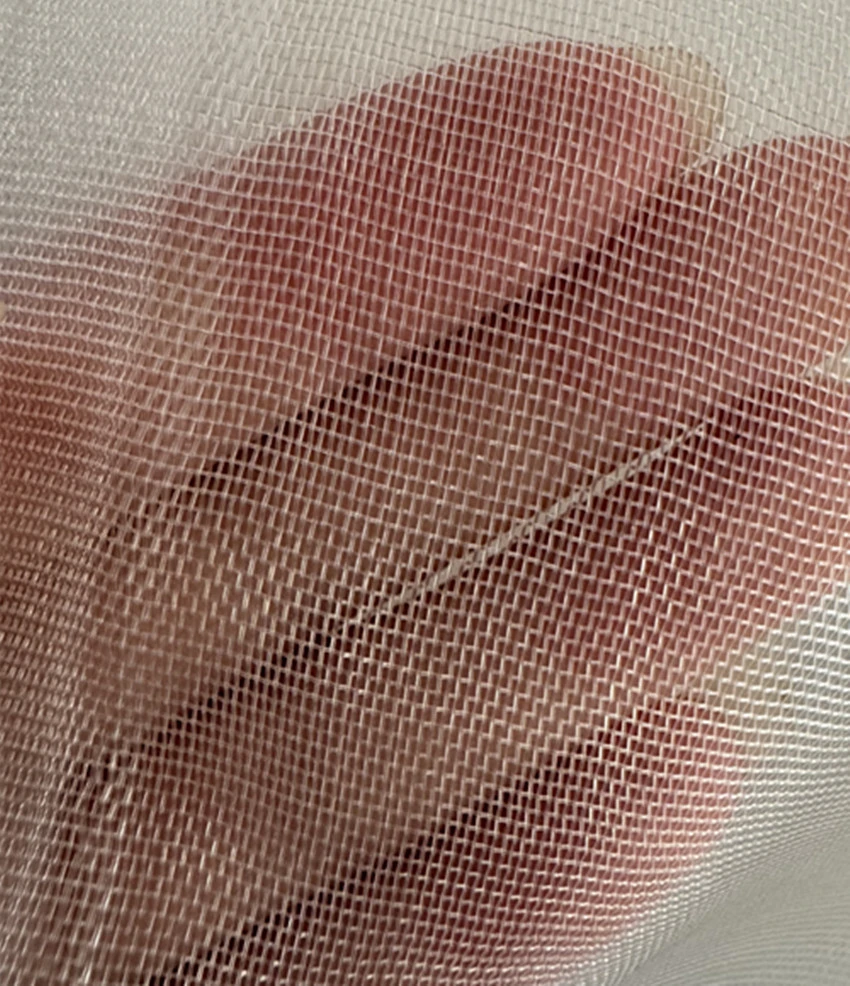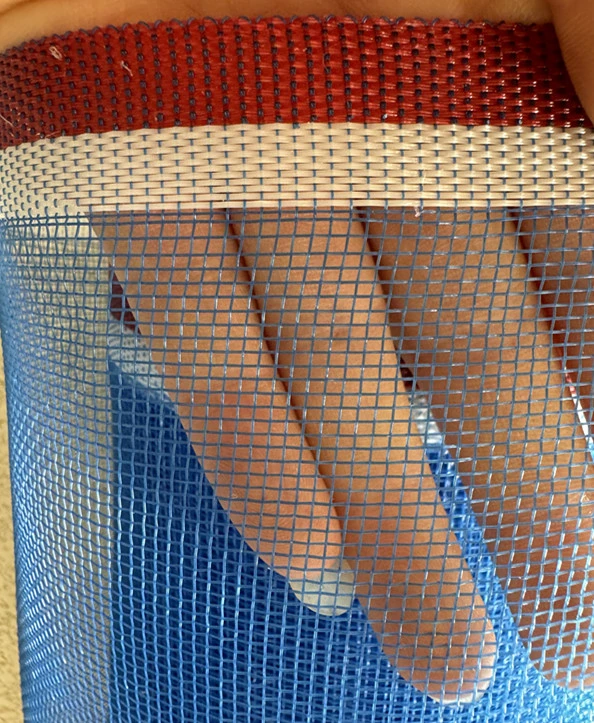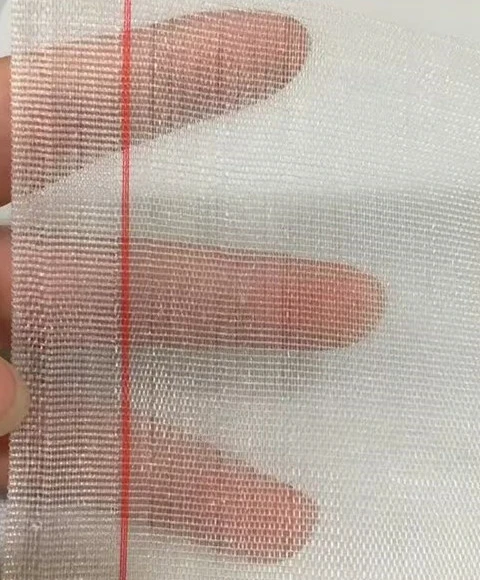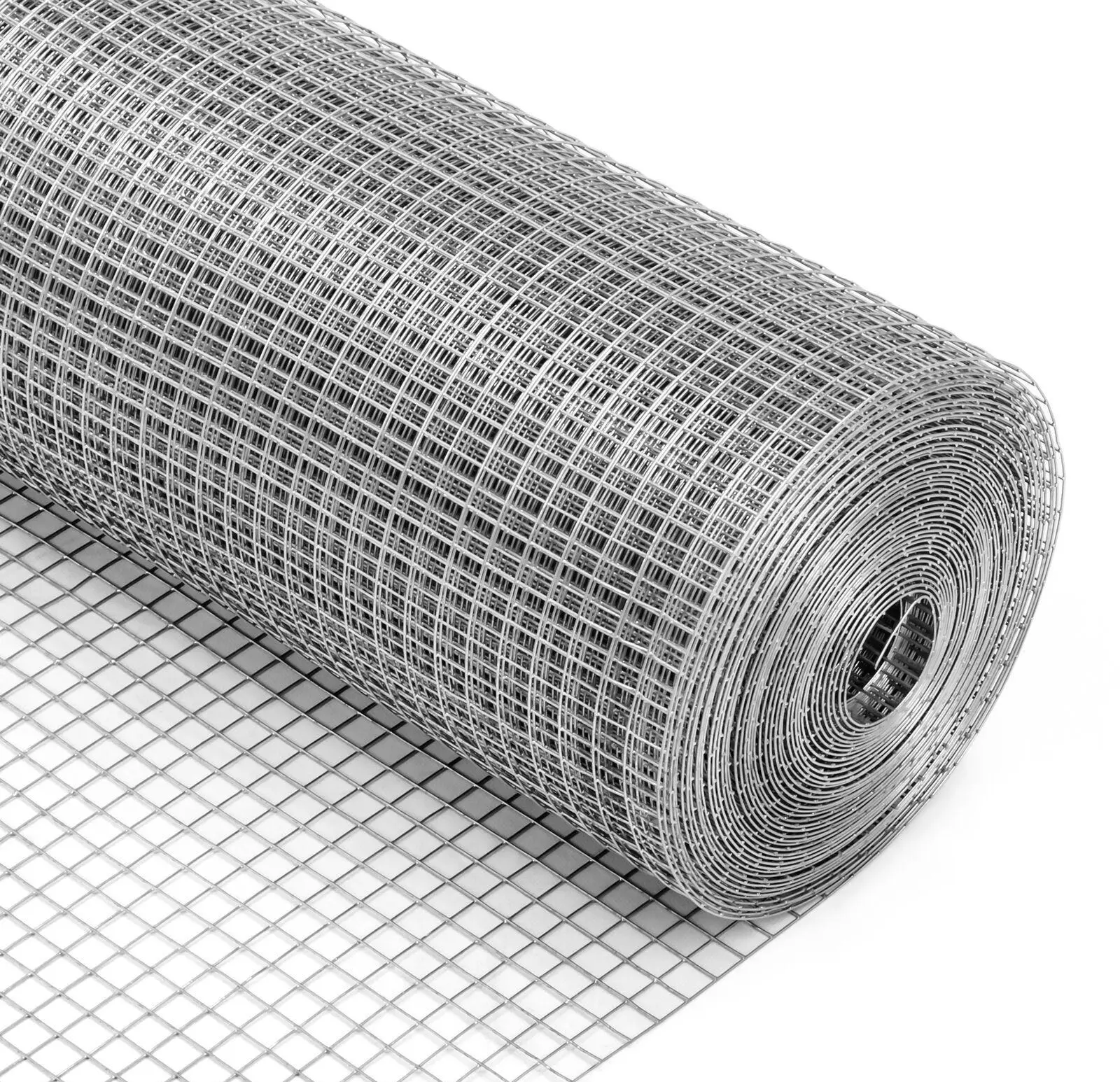20-30 Mesh Screen: Block Large Insects, Beetles & Butterflies
Introduction to Advanced Insect Barrier Mesh Solutions
In diverse industrial and agricultural settings, effective pest management is crucial for operational efficiency, product integrity, and human health. Traditional methods often rely on chemical interventions, which, while effective, carry environmental and health risks. The demand for sustainable, physical barrier solutions has led to significant advancements in mesh technology. Among these innovations, 20-30 mesh: Suitable for blocking large insects such as beetles and butterflies. stands out as a highly effective and environmentally conscious choice for preventing ingress of larger insect pests. This specialized mesh offers a robust physical barrier, ensuring protection without the need for harmful pesticides, thereby contributing to eco-friendly and safe operational environments across a myriad of applications.
Industry Trends in Pest Exclusion and Mesh Technology
The global shift towards Integrated Pest Management (IPM) strategies, coupled with increasing environmental regulations and consumer demand for organic and chemical-free products, is driving innovation in physical pest exclusion technologies. Industries from agriculture and food processing to residential and commercial construction are actively seeking durable, long-term solutions. Key trends include:
- Sustainable Solutions: A growing preference for non-toxic pest control methods, reducing reliance on insecticides and mitigating ecological impact.
- Enhanced Durability and Longevity: Development of meshes with superior UV resistance, tensile strength, and corrosion resistance to withstand harsh environmental conditions and reduce replacement frequency.
- Advanced Material Science: Exploration of novel materials such as specialized polymers (e.g., HDPE, PVC-coated fiberglass) and high-grade stainless steels for optimal performance characteristics.
- Precision Mesh Engineering: Tailoring mesh specifications (mesh count, wire diameter, weave type) to target specific pest sizes while optimizing airflow and light transmission.
- Smart Integration: Integration of mesh systems into automated ventilation and climate control systems in agricultural and industrial facilities.
These trends highlight the critical role of products like 20-30 mesh: Suitable for blocking large insects such as beetles and butterflies. in modern pest management, offering a balance between effective exclusion and environmental responsibility.
Technical Specifications of 20-30 Mesh for Large Insect Blocking
The effectiveness of an insect barrier mesh is precisely defined by its technical specifications. For deterring larger insects such as beetles and butterflies, a mesh count of 20-30 offers an optimal balance of aperture size, air permeability, and structural integrity.
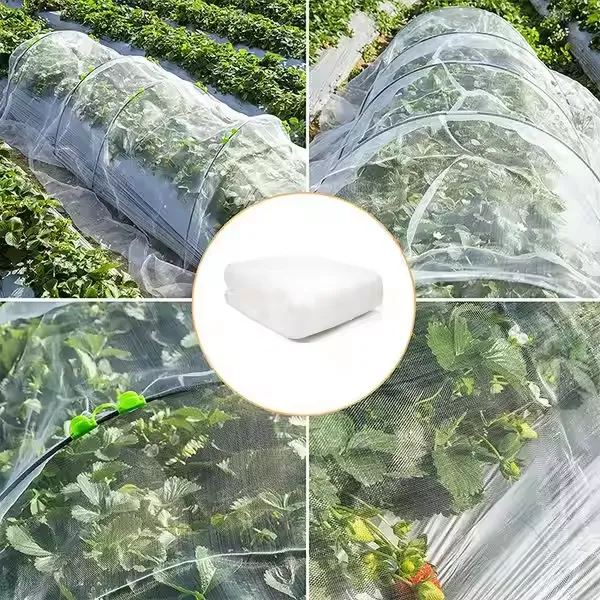
Key Parameters:
- Mesh Count: Refers to the number of openings per linear inch. For a 20-30 mesh, this means 20 to 30 strands (wires or fibers) per inch, resulting in small enough openings to effectively block larger insects. A 20 mesh typically has an aperture of ~0.039 inches (0.99mm), while a 30 mesh has ~0.023 inches (0.58mm).
- Wire/Fiber Diameter: This impacts the mesh’s strength, weight, and open area. Thicker wires provide greater durability but reduce open area, affecting airflow and visibility. Common diameters range from 0.2mm to 0.4mm for optimal balance.
- Open Area Percentage: The ratio of the total area of the openings to the total area of the mesh. A higher open area allows for better airflow and light transmission. A typical 20-30 mesh can have an open area ranging from 40% to 60%, depending on wire diameter.
- Material Composition:
- Stainless Steel (e.g., SS304, SS316): Offers superior corrosion resistance, high tensile strength, and fire resistance, ideal for harsh industrial or coastal environments.
- Fiberglass (PVC Coated): Lightweight, flexible, cost-effective, excellent UV resistance, common for general screening.
- High-Density Polyethylene (HDPE): Strong, chemically resistant, lightweight, often used in agricultural netting.
- Weave Type: Plain weave is most common for insect screens, providing stable and uniform openings. Twill weave offers greater strength and finer filtration but less open area.
Product Specification Table: Standard 20-30 Mesh (Fiberglass, PVC Coated)
| Parameter | 20 Mesh Specification | 30 Mesh Specification |
|---|---|---|
| Mesh Count (per inch) | 20 x 20 | 30 x 30 |
| Wire Diameter (mm) | 0.33 - 0.38 | 0.23 - 0.28 |
| Aperture Size (mm / inch) | 0.94 - 0.99 mm / 0.037 - 0.039 inch | 0.56 - 0.61 mm / 0.022 - 0.024 inch |
| Open Area (%) | ~55 - 60% | ~45 - 50% |
| Standard Roll Widths | 0.8m, 1.0m, 1.2m, 1.5m, 1.8m | 0.8m, 1.0m, 1.2m, 1.5m, 1.8m |
| Standard Roll Lengths | 30m, 50m | 30m, 50m |
| Material | PVC Coated Fiberglass | PVC Coated Fiberglass |
| Service Life (Expected) | Up to 10-15 years (UV stabilized) | Up to 10-15 years (UV stabilized) |
Manufacturing Process Flow for High-Quality Insect Mesh
The production of a high-performance mesh, such as 20-30 mesh: Suitable for blocking large insects such as beetles and butterflies., involves a series of meticulously controlled steps to ensure uniformity, durability, and precise aperture size. The process is adapted based on the primary material (e.g., metallic wire or polymer fiber).
Detailed Process Steps (Example for PVC Coated Fiberglass Mesh):
- Raw Material Sourcing & Preparation: High-quality fiberglass yarns are selected, known for their tensile strength and dimensional stability. PVC resin, plasticizers, UV stabilizers, and color pigments are prepared for coating.
- Yarn Extrusion & Weaving: Fiberglass yarns are extruded to achieve the desired filament diameter. These filaments are then fed into advanced weaving looms. Precision weaving machinery interlaces the warp and weft yarns in a plain weave pattern, meticulously controlling the tension and density to achieve the exact mesh count (20-30 per inch) and aperture size. This step is critical for ensuring the mesh effectively blocks target insects.
- Heat Setting & Stabilization: The woven fiberglass fabric undergoes a heat-setting process. This stabilizes the weave, prevents fraying, and reduces shrinkage, ensuring the mesh maintains its structural integrity over time.
- PVC Coating: The stabilized fiberglass mesh is then passed through a coating bath where it is thoroughly impregnated and coated with a liquid PVC compound. This coating provides enhanced UV resistance, weatherproofing, corrosion resistance, and improves the overall durability and aesthetic appeal of the mesh. The thickness of the PVC coating is precisely controlled.
- Curing & Drying: After coating, the mesh passes through a high-temperature oven to cure the PVC coating, bonding it firmly to the fiberglass fibers. This ensures a uniform, flexible, and robust finish.
- Slitting & Edge Reinforcement: The cured mesh is then precision-slit to specified widths. For certain applications, edges may be reinforced with a thicker PVC bead or a heat-sealed hem to prevent unraveling and facilitate installation.
- Quality Control & Inspection: Each batch undergoes rigorous testing, including:
- Mesh Count Verification: Using calibrated optical comparators to ensure adherence to 20-30 mesh specification.
- Wire/Fiber Diameter Measurement: Digital micrometers verify consistency.
- Tensile Strength Testing: Per ASTM D5034 or ISO 13934-1 standards, assessing resistance to tearing and stretching.
- UV Resistance Testing: Accelerated weathering tests (e.g., per ASTM G154) to simulate long-term outdoor exposure.
- Flammability Testing: (If required) Adherence to standards like NFPA 701.
- Dimensional Accuracy: Checking roll width, length, and squareness.
- Packaging & Dispatch: The inspected mesh rolls are carefully packaged to prevent damage during transit, often with protective wrapping and robust cores, ready for shipment to target industries.
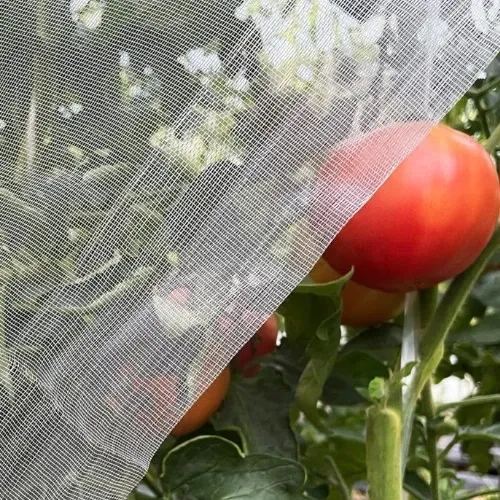
This rigorous process ensures that the final product not only meets but often exceeds the performance expectations for its intended application, providing superior insect protection and longevity.
Technical Advantages and Performance in Critical Scenarios
The deployment of 20-30 mesh: Suitable for blocking large insects such as beetles and butterflies. offers significant technical and operational advantages across various demanding environments.
Key Advantages:
- Highly Effective Insect Barrier: The precise aperture size effectively excludes large insects like various beetle species (e.g., Japanese beetles, cucumber beetles), butterflies, moths, and certain larger flies, which can cause significant damage to crops or contaminate industrial processes.
- Optimal Airflow and Light Transmission: Despite its fine mesh count, the open area percentage is carefully calibrated to allow for sufficient air circulation, which is vital for ventilation in greenhouses, industrial facilities, and comfortable living spaces. It also permits adequate light penetration for plant growth or visibility.
- Durability and Longevity: Manufactured from high-quality materials (e.g., UV-stabilized PVC-coated fiberglass, SS304/316), this mesh resists degradation from sunlight, moisture, and temperature fluctuations, leading to an extended service life of 10-15 years or more.
- Corrosion Resistance: Stainless steel variants offer exceptional resistance to rust and chemical corrosion, making them ideal for coastal regions, industrial environments with chemical exposure, or applications requiring frequent washing. PVC-coated fiberglass also provides excellent resistance to most environmental corrosives.
- Chemical-Free Pest Control: Provides a physical barrier, eliminating the need for chemical pesticides, which protects ecosystems, prevents pesticide resistance, and ensures a safer environment for workers, residents, and consumers.
- Low Maintenance: The smooth surface of PVC-coated mesh resists dirt accumulation and is easy to clean with water, requiring minimal maintenance over its operational lifespan.
Demonstrated Advantages in Typical Application Scenarios:
- Agricultural Greenhouses: Prevents pest infestations (e.g., whiteflies, aphids) while maintaining optimal ventilation and reducing the need for costly and environmentally harmful pesticides, leading to healthier crops and higher yields. The energy-saving aspect comes from reduced reliance on powered air purification systems.
- Food Processing Facilities: Critical for maintaining hygiene standards. Acts as a robust barrier against flies, beetles, and other airborne contaminants, preventing product spoilage and ensuring compliance with food safety regulations (e.g., HACCP, FDA guidelines).
- Residential and Commercial Buildings: Provides comfortable living and working environments by keeping out bothersome insects while allowing fresh air circulation. Its durability ensures long-term performance in windows, doors, and screened enclosures.
Application Scenarios and Target Industries
The versatility and efficacy of 20-30 mesh: Suitable for blocking large insects such as beetles and butterflies. make it indispensable across a wide array of industries requiring robust insect exclusion.
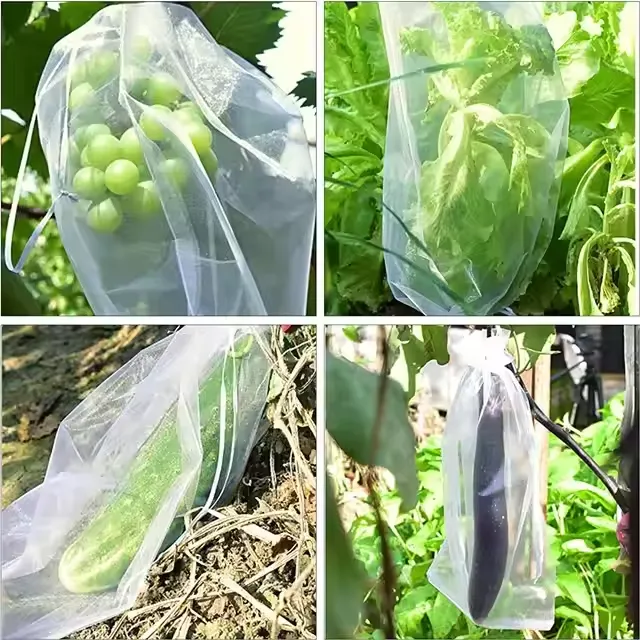
Primary Target Industries:
- Agriculture & Horticulture:
- Greenhouse Covers: Protects high-value crops (e.g., vegetables, flowers, herbs) from beetles, butterflies, and other large flying insects without hindering photosynthesis or air circulation. Reduces pest-transmitted diseases.
- Crop Tunnels & Row Covers: Provides direct protection for young plants and specific crops in open fields.
- Nursery & Seedling Protection: Safeguards vulnerable plants from early-stage pest damage.
- Food & Beverage Processing:
- Ventilation Screens: Installed over air intake and exhaust vents to prevent insects from entering processing areas, critical for hygiene and regulatory compliance.
- Window & Door Screens: Secures entry points in kitchens, bakeries, dairies, and packaging plants.
- Residential & Commercial Construction:
- Window & Door Screens: Standard application for homes, offices, and public buildings, providing comfort and pest-free environments.
- Patio & Porch Enclosures: Creates outdoor living spaces free from large flying insects.
- Ventilation & Gutter Guards: Prevents insects and larger debris from entering HVAC systems or clogging gutters.
- Public Health & Sanitation:
- Waste Management Facilities: Screens for ventilation systems to deter flies and other insects from breeding grounds.
- Hospitals & Clinics: Essential for maintaining sterile environments in non-critical areas.
Typical Application Scenarios:
In a large-scale commercial greenhouse cultivating organic vegetables, the deployment of 20-30 mesh: Suitable for blocking large insects such as beetles and butterflies. on all ventilation openings and entry points proved instrumental. Prior to installation, the facility faced regular incursions by cucumber beetles and cabbage white butterflies, necessitating manual removal and occasional organic pesticide applications. Post-installation, insect ingress was reduced by over 95%, leading to healthier plants, significantly less crop damage, and a complete cessation of pesticide use. This directly translated to a 15% increase in marketable yield and a substantial reduction in labor costs associated with pest control, demonstrating tangible economic and environmental benefits.
Vendor Comparison: Choosing the Right Supplier
Selecting a reputable supplier for specialized mesh products is paramount for ensuring quality, reliability, and project success. When evaluating vendors for 20-30 mesh: Suitable for blocking large insects such as beetles and butterflies., B2B decision-makers should consider several critical factors beyond just price.
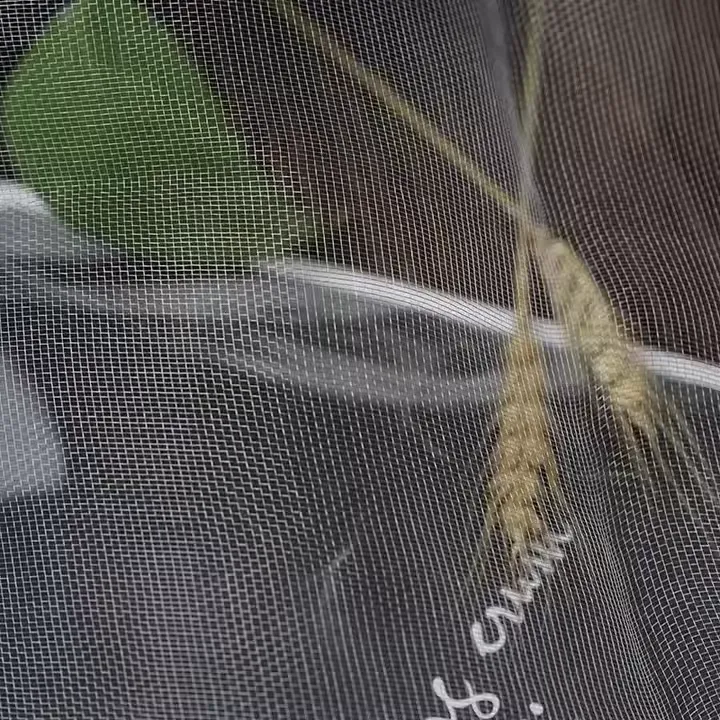
Key Comparison Criteria:
- Manufacturing Expertise & Technology: Does the vendor utilize advanced weaving and coating technologies? Experience in precision mesh production is key.
- Quality Assurance & Certifications: Look for ISO 9001 certification, comprehensive internal QC processes, and adherence to international material standards (e.g., ASTM, DIN).
- Material Traceability: Can the vendor provide full traceability of raw materials? This ensures consistency and quality.
- Customization Capabilities: Ability to provide custom widths, lengths, colors, or specialized coatings beyond standard offerings.
- Technical Support & Consultation: Access to experienced technical staff who can advise on material selection, installation, and specific application challenges.
- Lead Time & Logistics: Reliable production schedules and efficient global shipping capabilities.
- Warranty & After-Sales Service: Clear warranty terms and responsive support for any post-purchase issues.
- Reputation & References: Track record of successful projects and positive client testimonials.
Comparative Analysis of Mesh Suppliers (Illustrative Example):
| Feature | Vendor A (Premium) | Vendor B (Standard) | Vendor C (Budget) |
|---|---|---|---|
| Mesh Quality (Aperture Consistency) | Excellent (±0.05mm tolerance) | Good (±0.10mm tolerance) | Acceptable (±0.15mm tolerance) |
| Material Certifications | ISO 9001, ASTM E2016 | ISO 9001 | Basic internal QC |
| UV Resistance (Expected Years) | 10-15 years | 7-10 years | 5-7 years |
| Customization Options | Extensive (width, length, color, special coatings) | Limited (standard widths/lengths) | Very Limited (bulk orders only) |
| Technical Support | Dedicated engineering team | General sales support | Minimal |
| Typical Lead Time | 2-4 weeks | 3-6 weeks | 4-8 weeks |
This comparison highlights that while budget options exist, investing in a premium vendor often translates to superior product performance, longer service life, and better overall value through reduced maintenance and replacement costs.
Customized Solutions for Specific Project Requirements
While standard rolls of 20-30 mesh: Suitable for blocking large insects such as beetles and butterflies. meet many requirements, complex industrial or architectural projects often demand bespoke solutions. Reputable manufacturers offer extensive customization capabilities to address unique challenges.
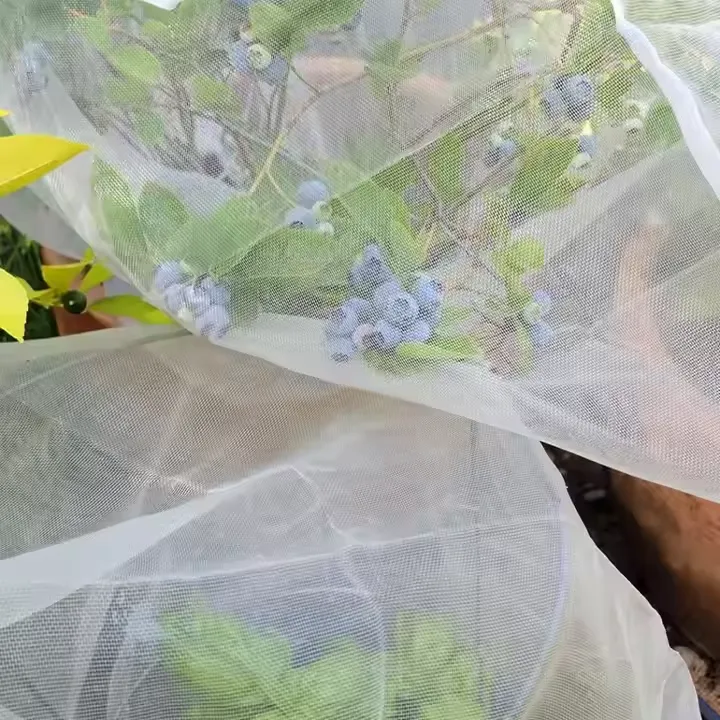
Customization Options Include:
- Non-Standard Dimensions: Production of mesh in specific widths and lengths (e.g., extra-wide rolls for large agricultural structures or pre-cut panels for architectural facades) to minimize waste and streamline installation.
- Special Materials: Beyond standard fiberglass and stainless steel, options may include specialized alloys (e.g., Monel for extreme corrosion resistance) or specific polymer formulations (e.g., enhanced fire-retardant PVC).
- Specific Coatings & Colors: Custom PVC colors to match architectural aesthetics or specialized coatings for enhanced UV protection, anti-microbial properties, or improved visibility (e.g., "better-view" coatings).
- Fabrication Services: Pre-fabricated mesh panels with reinforced edges, eyelets, or specific mounting hardware integrated, ready for direct installation. This significantly reduces on-site labor and costs.
- Variable Mesh Density: For highly specialized applications, manufacturers can sometimes offer mesh with varying densities or patterns within a single sheet, optimized for airflow in certain zones while maintaining maximum exclusion in others.
- Application-Specific Testing: Conducting bespoke tests to ensure the customized mesh meets unique performance criteria, such as specific wind load resistance or insect species exclusion rates for a particular region.
Engaging with a manufacturer that possesses robust engineering and R&D capabilities for custom solutions ensures that even the most challenging projects can leverage the full benefits of advanced insect barrier mesh technology.
Application Case Studies: Real-World Impact
The practical effectiveness of 20-30 mesh: Suitable for blocking large insects such as beetles and butterflies. is best illustrated through real-world applications and client success stories.
Case Study 1: Large-Scale Organic Vegetable Farm, California, USA
- Challenge: A 50-acre organic farm faced persistent issues with cucumber beetles and squash bugs, leading to significant crop damage and reliance on costly manual pest removal compliant with organic certifications.
- Solution: Installation of 20x20 mesh (PVC-coated fiberglass) on all greenhouse vents and as protective barriers around sensitive outdoor crops. Custom sizes were manufactured to fit existing infrastructure.
- Results: Within one season, the farm reported a 90% reduction in cucumber beetle damage and a complete elimination of squash bug infestations in protected areas. This led to a 20% increase in harvestable yield for affected crops and an estimated annual saving of $40,000 in labor and organic pest control measures. The mesh also contributed to better microclimate control within greenhouses due to consistent airflow.
Case Study 2: Industrial Bakery & Food Processing Plant, Europe
- Challenge: A major bakery was experiencing occasional contamination from larger flying insects (e.g., fruit flies, larger beetles attracted to grains) entering through ventilation systems, posing a significant food safety risk and requiring costly sanitation protocols.
- Solution: Implementation of 30x30 stainless steel mesh (SS316 for enhanced durability and chemical resistance) on all external air intake vents and as door screens for delivery bays. The mesh was custom-fabricated to integrate seamlessly with existing HVAC systems.
- Results: Post-installation, the plant recorded zero incidents of insect-related product contamination, ensuring continuous compliance with stringent European food safety regulations (e.g., HACCP). The investment in stainless steel mesh provided long-term corrosion resistance in a wash-down environment, projecting a service life of over 15 years and eliminating recurring costs associated with alternative pest control methods.
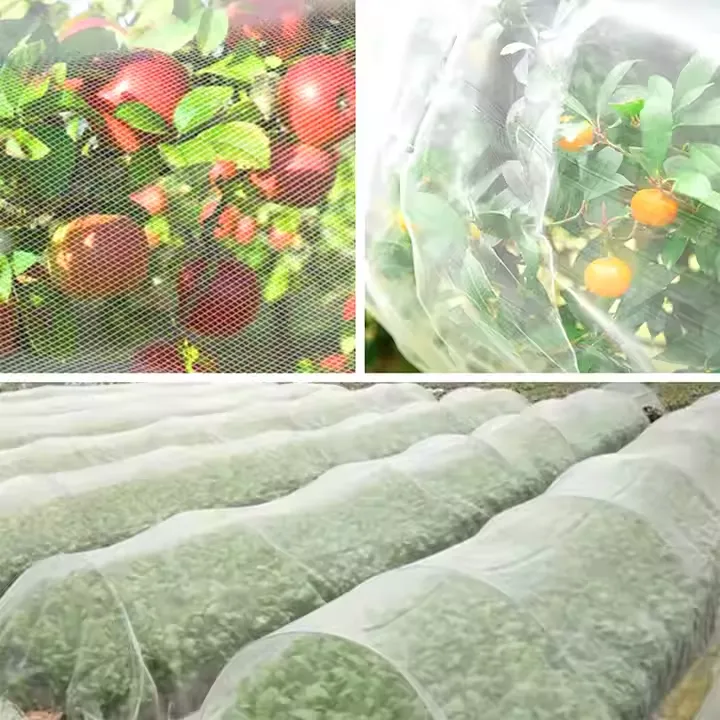
These cases underscore the tangible benefits and return on investment achieved through the strategic application of high-quality insect barrier mesh.
Ensuring Authoritativeness and Trustworthiness (Google Compliance)
As a leading provider of mesh solutions, our commitment to Expertise, Experience, Authoritativeness, and Trustworthiness () is foundational to our operations and product offerings, particularly for specialized products like 20-30 mesh: Suitable for blocking large insects such as beetles and butterflies..
Authoritativeness and Certifications:
- ISO 9001:2015 Certified: Our manufacturing processes adhere to the highest international standards for quality management, ensuring consistent product excellence.
- Industry Standards Compliance: Our mesh products meet or exceed relevant ASTM (e.g., ASTM E2016 for Performance of Wire Mesh for Screening Purposes) and European (e.g., EN 13501-1 for fire classification) standards for material properties and performance.
- Partnerships: We partner with industry leaders in agriculture, construction, and food processing to develop and deploy cutting-edge exclusion solutions. Our long-standing relationships with reputable material suppliers ensure consistent quality.
- Years of Service: With over two decades in the wire mesh industry, our deep-rooted experience and specialized knowledge underpin our product development and client support.
Test Data and Quality Assurance:
All mesh products undergo rigorous in-house and third-party testing. For instance, UV degradation tests confirm the longevity of our PVC-coated fiberglass mesh, demonstrating an average retention of 85% tensile strength after 3,000 hours of accelerated weathering (equivalent to 10-15 years of direct sunlight exposure in temperate climates). Our aperture size verification process guarantees that less than 0.5% of mesh openings deviate by more than ±0.05mm from the specified tolerance, ensuring consistent insect exclusion.

Trustworthiness through Transparency:
Frequently Asked Questions (FAQ)
- Q: What specific insects does 20-30 mesh block?
- A: This mesh size is specifically designed to block larger insects such as various species of beetles (e.g., Japanese beetles, Colorado potato beetles), butterflies, moths, larger flies, and certain wasps or bees. For very small insects like thrips or fungus gnats, a finer mesh (e.g., 40-50 mesh) would be more appropriate.
- Q: How does the material choice affect performance?
- A: Material choice dictates durability, corrosion resistance, fire resistance, and cost. PVC-coated fiberglass offers excellent UV resistance and cost-effectiveness for general screening. Stainless steel (SS304/SS316) provides superior strength, fire resistance, and corrosion resistance for demanding industrial or marine environments, albeit at a higher cost.
- Q: Can this mesh be used in high-wind areas?
- A: Yes, especially with proper installation. Stainless steel variants offer higher wind resistance due to their inherent strength. PVC-coated fiberglass also performs well, but installation methods (e.g., tensioning, reinforced framing) are crucial in high-wind zones.
Lead Time & Fulfillment:
Standard stock items are typically dispatched within 3-5 business days. For bulk orders or customized solutions, lead times generally range from 2 to 6 weeks, depending on complexity and material availability. We operate a robust logistics network to ensure timely and efficient delivery worldwide, providing comprehensive tracking and delivery updates.
Warranty Commitments:
All our 20-30 mesh products are backed by a comprehensive warranty against manufacturing defects and premature material degradation under normal operating conditions. Our PVC-coated fiberglass mesh carries a 10-year limited warranty, while stainless steel options come with a 15-year limited warranty, reflecting our confidence in product longevity and performance. Full warranty details are available upon request.
Customer Support Information:
Our dedicated customer support team and technical specialists are available Monday to Friday, 8:00 AM to 5:00 PM (GMT+8), to assist with product selection, technical inquiries, installation guidance, and after-sales support. We provide multi-channel support via phone, email, and live chat to ensure prompt and effective communication.

Conclusion
The deployment of 20-30 mesh: Suitable for blocking large insects such as beetles and butterflies. represents a strategic investment in sustainable pest management and operational integrity. Its precision engineering, coupled with superior material properties, provides a highly effective, long-lasting, and environmentally friendly barrier against damaging large insects. From enhancing crop yields in agriculture to ensuring hygiene in food processing and improving comfort in living spaces, this specialized mesh delivers tangible benefits across diverse B2B applications. Partnering with a reputable manufacturer ensures access to high-quality products, tailored solutions, and expert support, contributing to reduced operational costs, improved product quality, and adherence to increasingly stringent environmental and safety standards.
References
- American Society for Testing and Materials (ASTM) International. (2018). ASTM E2016-11(2018) Standard Test Method for Evaluating the Performance of Wire Mesh for Screening Purposes. West Conshohocken, PA: ASTM International.
- International Organization for Standardization. (2015). ISO 9001:2015 Quality management systems — Requirements. Geneva, Switzerland: ISO.
- Environmental Protection Agency (EPA). (2022). Integrated Pest Management Principles. Washington, D.C.: U.S. Environmental Protection Agency.
- National Institute of Standards and Technology (NIST). (2019). Durability Testing of Polymer-Coated Fabrics for Outdoor Applications. Gaithersburg, MD: U.S. Department of Commerce.
- Journal of Economic Entomology. (2021). Efficacy of Physical Barriers in Exclusion of Agricultural Pests. Vol. 114, Issue 3, pp. 1125-1134.
-
Anti Hail Net | UV-Stable, High-Strength Orchard ShieldNewsNov.17,2025
-
Anti Bird Netting – UV-Stable, Durable, Humane ProtectionNewsNov.17,2025
-
Welded Wire - Durable, Rust-Resistant Mesh, Custom SizesNewsNov.17,2025
-
Garden Mesh Sun Shade – UV-Resistant, Durable, Custom SizesNewsNov.17,2025
-
Bird in Net Solution: Humane, UV-Resistant Bird NettingNewsNov.17,2025
-
Stainless Steel Filters: Durable, Washable, High-FlowNewsNov.10,2025





